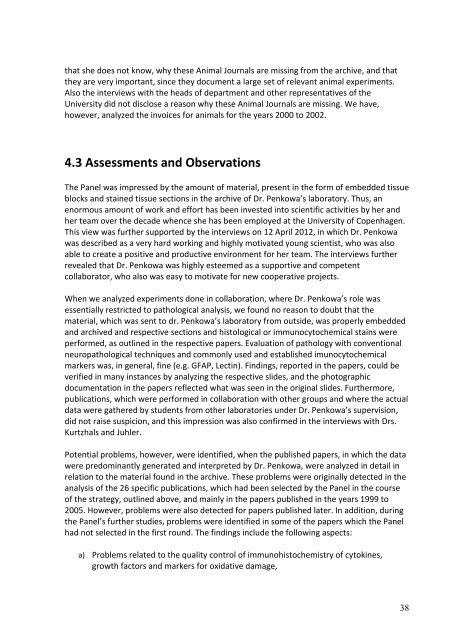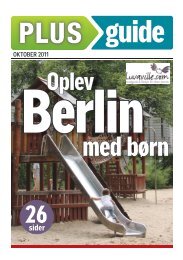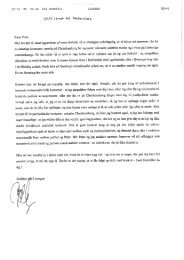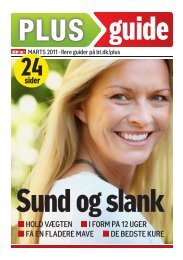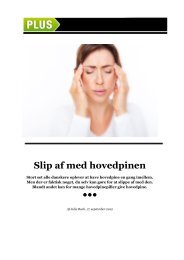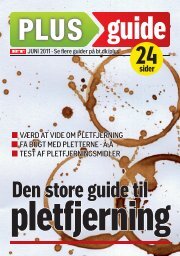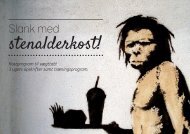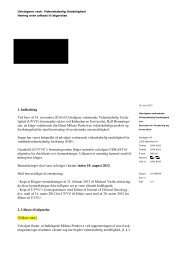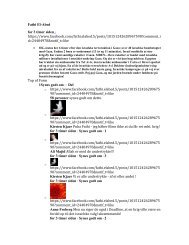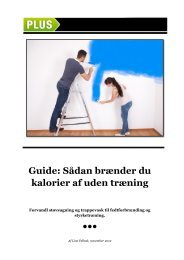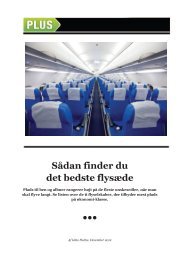Investigation into the research of Milena Penkowa - Nyheder
Investigation into the research of Milena Penkowa - Nyheder
Investigation into the research of Milena Penkowa - Nyheder
Create successful ePaper yourself
Turn your PDF publications into a flip-book with our unique Google optimized e-Paper software.
that she does not know, why <strong>the</strong>se Animal Journals are missing from <strong>the</strong> archive, and that<br />
<strong>the</strong>y are very important, since <strong>the</strong>y document a large set <strong>of</strong> relevant animal experiments.<br />
Also <strong>the</strong> interviews with <strong>the</strong> heads <strong>of</strong> department and o<strong>the</strong>r representatives <strong>of</strong> <strong>the</strong><br />
University did not disclose a reason why <strong>the</strong>se Animal Journals are missing. We have,<br />
however, analyzed <strong>the</strong> invoices for animals for <strong>the</strong> years 2000 to 2002.<br />
4.3 Assessments and Observations<br />
The Panel was impressed by <strong>the</strong> amount <strong>of</strong> material, present in <strong>the</strong> form <strong>of</strong> embedded tissue<br />
blocks and stained tissue sections in <strong>the</strong> archive <strong>of</strong> Dr. <strong>Penkowa</strong>’s laboratory. Thus, an<br />
enormous amount <strong>of</strong> work and effort has been invested <strong>into</strong> scientific activities by her and<br />
her team over <strong>the</strong> decade whence she has been employed at <strong>the</strong> University <strong>of</strong> Copenhagen.<br />
This view was fur<strong>the</strong>r supported by <strong>the</strong> interviews on 12 April 2012, in which Dr. <strong>Penkowa</strong><br />
was described as a very hard working and highly motivated young scientist, who was also<br />
able to create a positive and productive environment for her team. The interviews fur<strong>the</strong>r<br />
revealed that Dr. <strong>Penkowa</strong> was highly esteemed as a supportive and competent<br />
collaborator, who also was easy to motivate for new cooperative projects.<br />
When we analyzed experiments done in collaboration, where Dr. <strong>Penkowa</strong>’s role was<br />
essentially restricted to pathological analysis, we found no reason to doubt that <strong>the</strong><br />
material, which was sent to dr. <strong>Penkowa</strong>’s laboratory from outside, was properly embedded<br />
and archived and respective sections and histological or immunocytochemical stains were<br />
performed, as outlined in <strong>the</strong> respective papers. Evaluation <strong>of</strong> pathology with conventional<br />
neuropathological techniques and commonly used and established imunocytochemical<br />
markers was, in general, fine (e.g. GFAP, Lectin). Findings, reported in <strong>the</strong> papers, could be<br />
verified in many instances by analyzing <strong>the</strong> respective slides, and <strong>the</strong> photographic<br />
documentation in <strong>the</strong> papers reflected what was seen in <strong>the</strong> original slides. Fur<strong>the</strong>rmore,<br />
publications, which were performed in collaboration with o<strong>the</strong>r groups and where <strong>the</strong> actual<br />
data were ga<strong>the</strong>red by students from o<strong>the</strong>r laboratories under Dr. <strong>Penkowa</strong>’s supervision,<br />
did not raise suspicion, and this impression was also confirmed in <strong>the</strong> interviews with Drs.<br />
Kurtzhals and Juhler.<br />
Potential problems, however, were identified, when <strong>the</strong> published papers, in which <strong>the</strong> data<br />
were predominantly generated and interpreted by Dr. <strong>Penkowa</strong>, were analyzed in detail in<br />
relation to <strong>the</strong> material found in <strong>the</strong> archive. These problems were originally detected in <strong>the</strong><br />
analysis <strong>of</strong> <strong>the</strong> 26 specific publications, which had been selected by <strong>the</strong> Panel in <strong>the</strong> course<br />
<strong>of</strong> <strong>the</strong> strategy, outlined above, and mainly in <strong>the</strong> papers published in <strong>the</strong> years 1999 to<br />
2005. However, problems were also detected for papers published later. In addition, during<br />
<strong>the</strong> Panel’s fur<strong>the</strong>r studies, problems were identified in some <strong>of</strong> <strong>the</strong> papers which <strong>the</strong> Panel<br />
had not selected in <strong>the</strong> first round. The findings include <strong>the</strong> following aspects:<br />
a) Problems related to <strong>the</strong> quality control <strong>of</strong> immunohistochemistry <strong>of</strong> cytokines,<br />
growth factors and markers for oxidative damage,<br />
38


